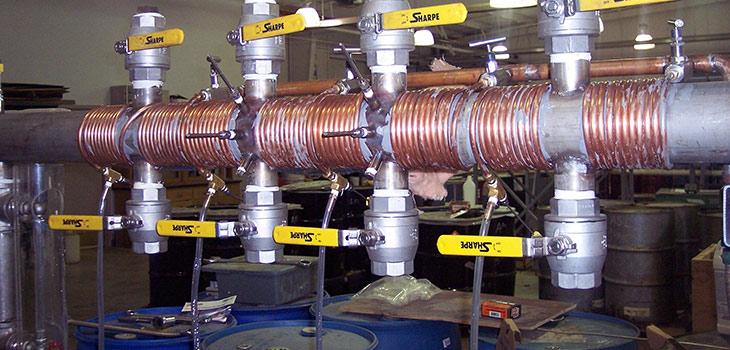

The wet gas corrosion flow loops are designed to study the effect of operating parameters on the corrosion of carbon steel under dewing condition during the transportation of wet gas. Several corrosive gases such as CO 2 and HAc are under investigation. These loops also provide the means to quantify the efficiency of volatile inhibitors.
Both closed systems are comprised of 4" diameter, Sch 40, 316 stainless steel for resistance to corrosion. The loops are 25-30 meters long, horizontally leveled, and fully insulated from the ambient conditions. Both have independent tanks used for liquid storage that can hold 1m 3 (260 gallons) of water. The concentration of acid present in the water is controlled by injection. Heat is added to the system using immersion heaters which are isolated in tubular heater jackets filled with oil within each tank. The blowers can provide gas velocities ranging from 5 m/s to 20 m/s. In each test section, a system of cooling coils is used for the cooling of the gas phase, allowing condensation to occur. The test section provides four ports, two at the top of the line and two at the bottom of the line, which are available for the measurement of the corrosion rate by insertion of flush-mounted corrosion monitoring probes. The volume of condensed water is measured after being separated from the gas phase.
Instrumentation
The temperature in each system is controlled by a Proportional Integrator Differential (P.I.D) regulator (+/- 1°C). Monitoring of the temperature occurs in the gas phase between the inlet and the outlet of the heat exchangers (both in the gas phase and in the cooling liquid), and at the wall temperature (by a thermocouple installed in the head of a flush-mounted probe). The pressure in the tank is controlled (+/- 0.1 psi).
